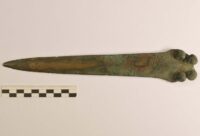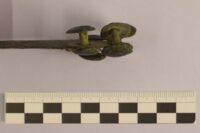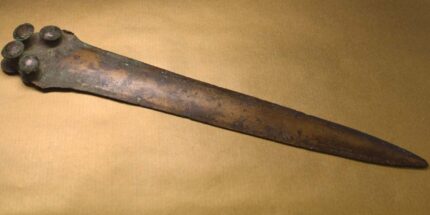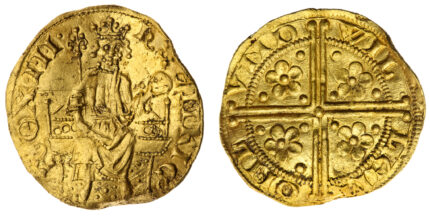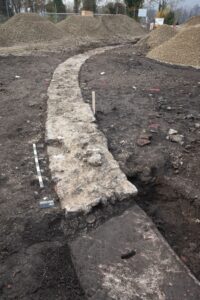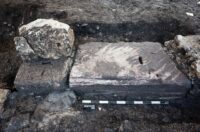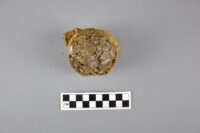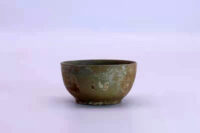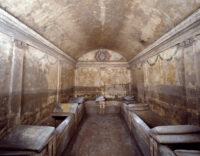 The Ipogeo dei Cristallini, an ancient Greek necropolis carved into the tufa stone underneath Naples, is opening to the general public for the first time this year, giving visitors the opportunity to see a treasure trove of Greek funerary art and architecture.
The Ipogeo dei Cristallini, an ancient Greek necropolis carved into the tufa stone underneath Naples, is opening to the general public for the first time this year, giving visitors the opportunity to see a treasure trove of Greek funerary art and architecture.
The earliest coastal settlement of what would become Naples was established by Greek colonists from Rhodes in the 9th century B.C. and grew in wealth in population as an ally of fellow Greek city Syracuse. It was conquered by Rome in the 4th century B.C., but maintained its strong Greek culture even as the Roman elite flocked to build elegant villas on the beautiful Neapolitan seaside.
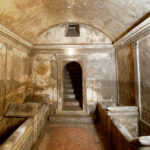 For hundreds of years the Greeks of Neapolis buried their high-status dead in hypogea dug entirely out of the tufa of the city’s hills. Later the Romans made use of them as well, carving niches out of the walls of the old Greek tombs to hold cinerary remains and digging new hypogea. They were reused again as Christian catacombs.
For hundreds of years the Greeks of Neapolis buried their high-status dead in hypogea dug entirely out of the tufa of the city’s hills. Later the Romans made use of them as well, carving niches out of the walls of the old Greek tombs to hold cinerary remains and digging new hypogea. They were reused again as Christian catacombs.
They fell into disuse after repeatedly mudslides buried the rooms and were eventually forgotten. A select few have since been rediscovered and preserved, the Ipogeo dei Cristallini among them. It was found in 1889 when the landowner, Baron Giovanni di Donato, was looking for water under his palace on Via Cristallini. Four chambers were excavated and a flight of steps built down into the hypogeum which was now 40 feet below ground level thanks to all those mudslides.
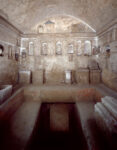 The Cristallini Hypogeum was built in the late 4th, early 3rd century B.C. Every chamber was carved out of the living tufa, sculpted to look like real homes with architectural features like steps, columns, benches and ceiling beams. The dead were laid to rest in sarcophagi carved to look like beds, complete with plump pillows. The only element that was not carved out of the tufa is a relief of a gorgon that was carved separately and mounted high on the wall of one of the chambers, looking down at the sarcophagus beds.
The Cristallini Hypogeum was built in the late 4th, early 3rd century B.C. Every chamber was carved out of the living tufa, sculpted to look like real homes with architectural features like steps, columns, benches and ceiling beams. The dead were laid to rest in sarcophagi carved to look like beds, complete with plump pillows. The only element that was not carved out of the tufa is a relief of a gorgon that was carved separately and mounted high on the wall of one of the chambers, looking down at the sarcophagus beds.
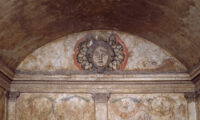 The gorgon’s original polychrome paint is beautifully preserved, as are other painted elements like trompe l’oeil details on the beds, a red faux marble floor, red steps, blue and yellow stripes on the pillows, red, blue and white friezes, draped garlands, lit candelabras, a large golden patera with reclining figures of Dionysus and Ariadne. The mudslides that ended the tombs’ use had the happy side-effect of preserving the paint. Almost no Greek painting has survived, so the vivid colors and details are priceless glimpses of Greek mural art.
The gorgon’s original polychrome paint is beautifully preserved, as are other painted elements like trompe l’oeil details on the beds, a red faux marble floor, red steps, blue and yellow stripes on the pillows, red, blue and white friezes, draped garlands, lit candelabras, a large golden patera with reclining figures of Dionysus and Ariadne. The mudslides that ended the tombs’ use had the happy side-effect of preserving the paint. Almost no Greek painting has survived, so the vivid colors and details are priceless glimpses of Greek mural art.
On the walls, meanwhile, are scrawled names in ancient Greek: lists of those buried inside.
The other three tombs are equally interesting, if not as spectacular. One was also frescoed, although the paintings have been damaged — it’s hoped that future restoration will bring them back to light.
In another lie six headstones, dedicated to the dead. Each lists the name of the deceased, and signs off with the inscription “khaire” — an ancient Greek greeting, akin to the “ciao” that modern Neapolitans use. […]
Elsewhere are sculptures of people, and traces of portraits — potentially dead ancestors, according to Paolo Giulierini, director of the National Archaeology Museum of Naples, which houses hundreds of finds from the tombs, including sculptures, vases, and carved symbols of resurrection, such as pomegranates and eggs.
The hypogeum is still under observation by archaeologists to assess its stability and environmental threats. The tomb will not be opened until the monitoring is complete and experts determine how many visitors should be allowed and how often. Restoration work will be ongoing even when the tomb opens.
